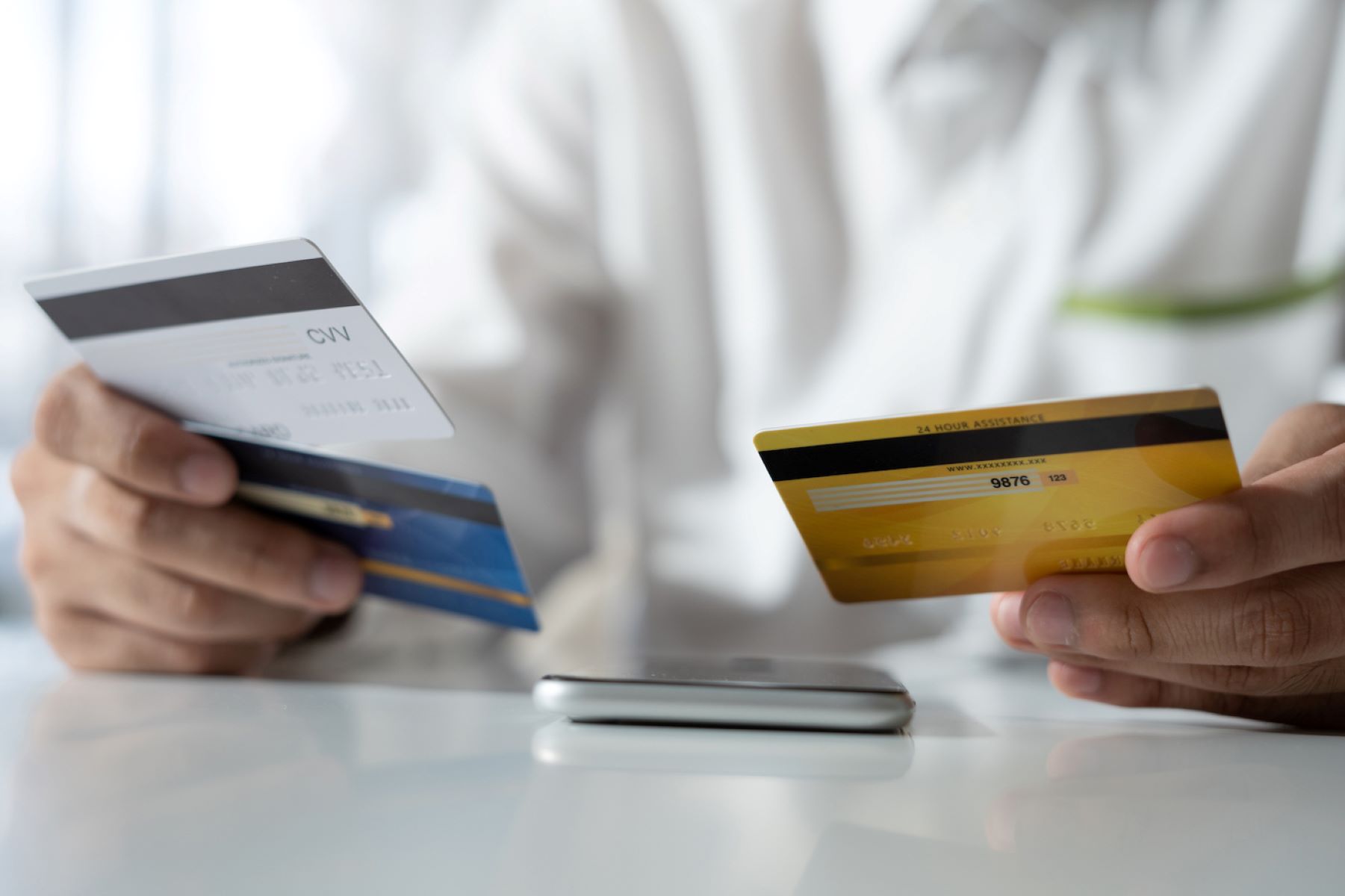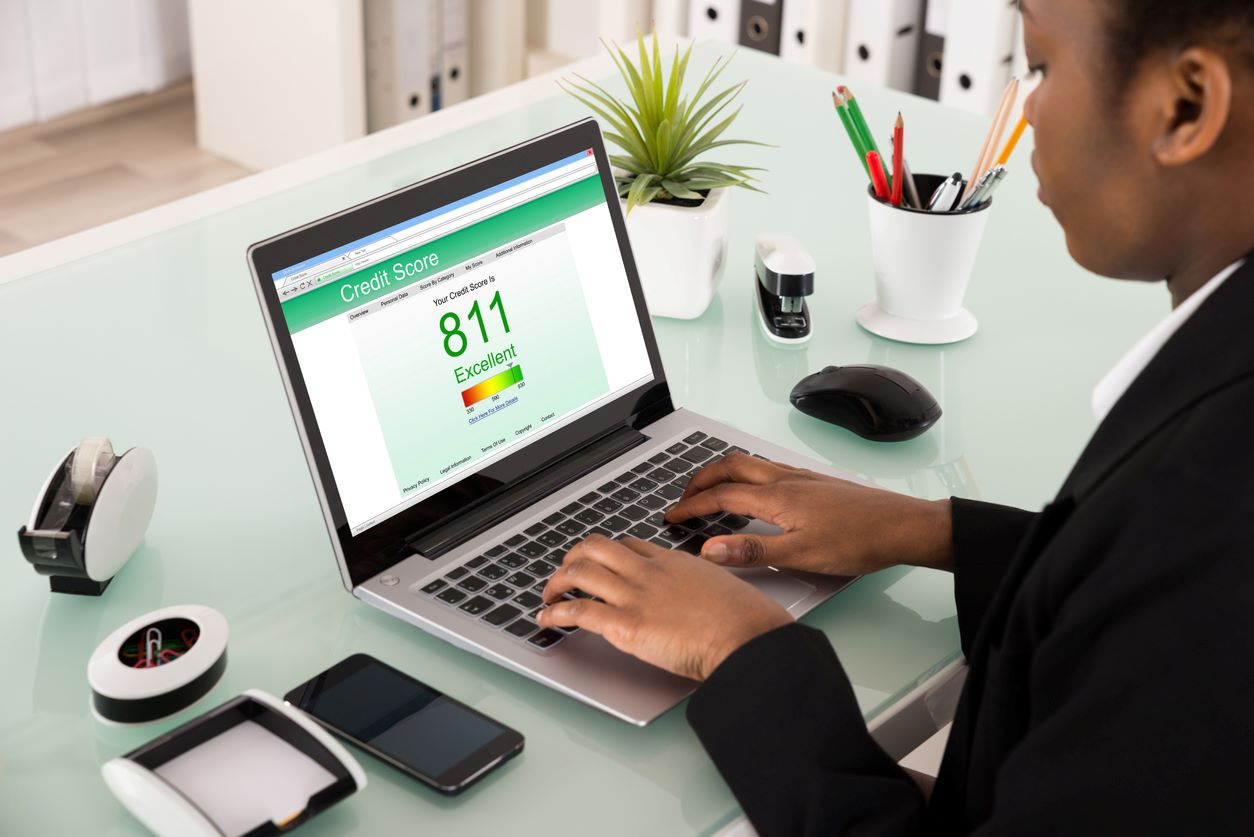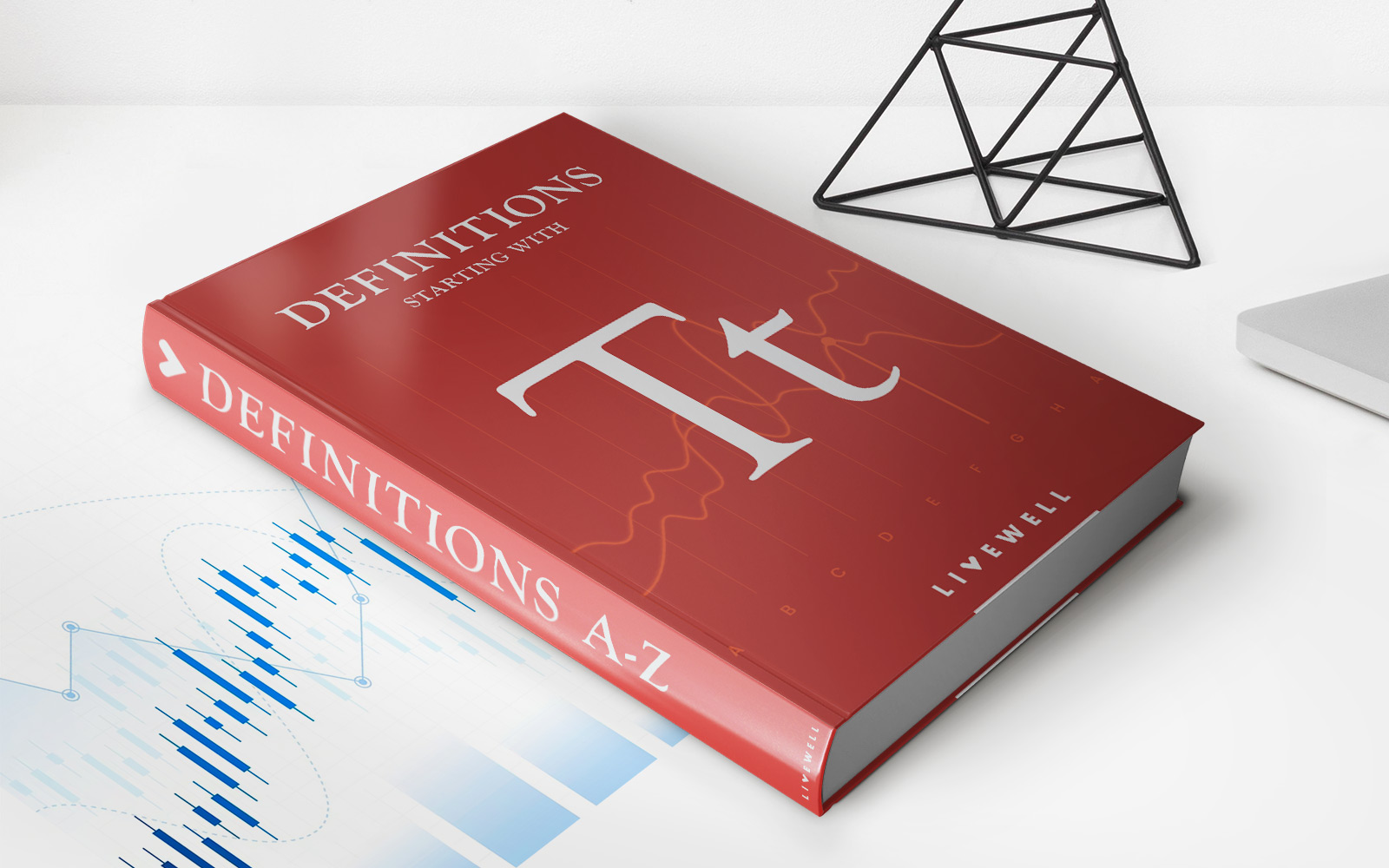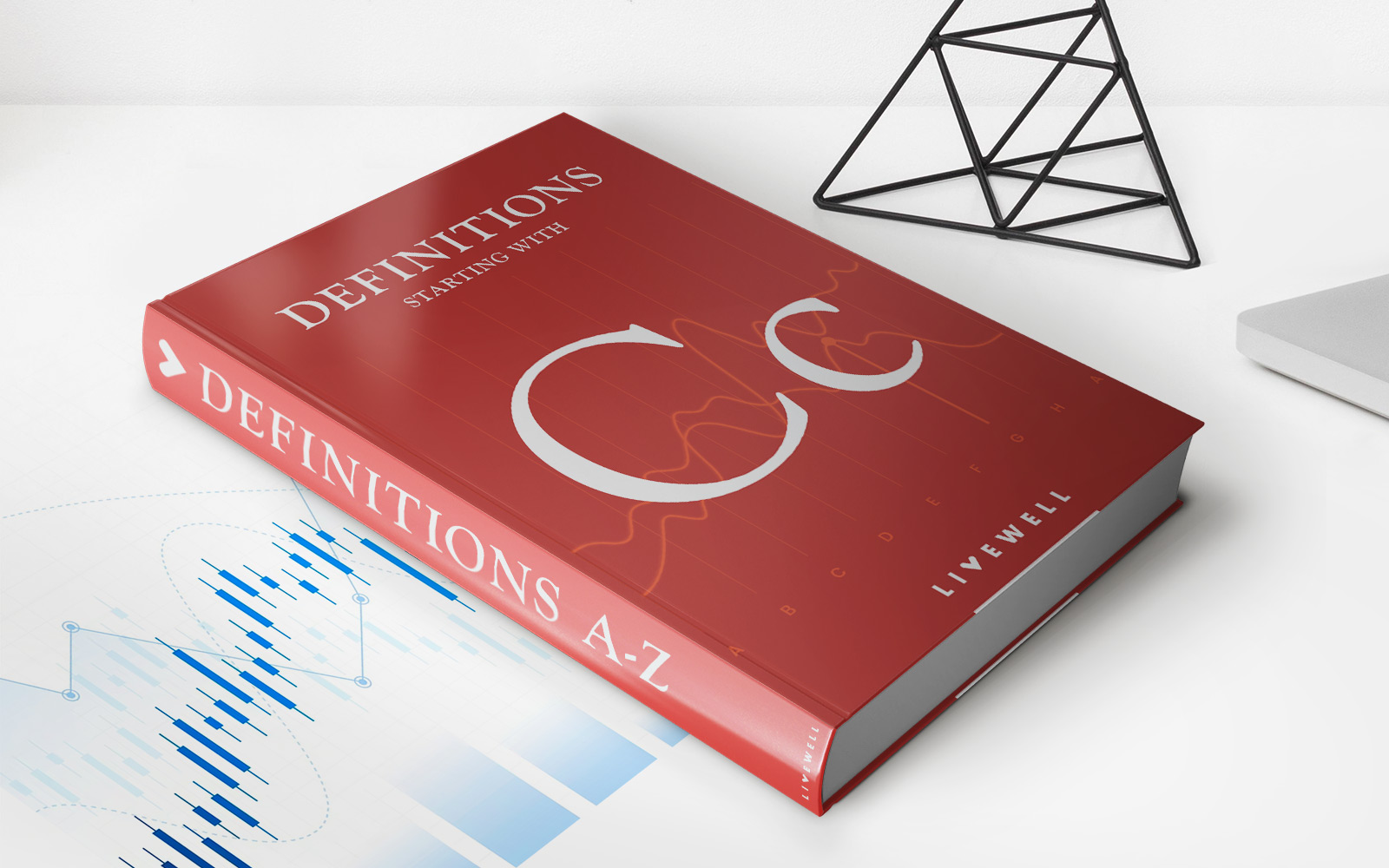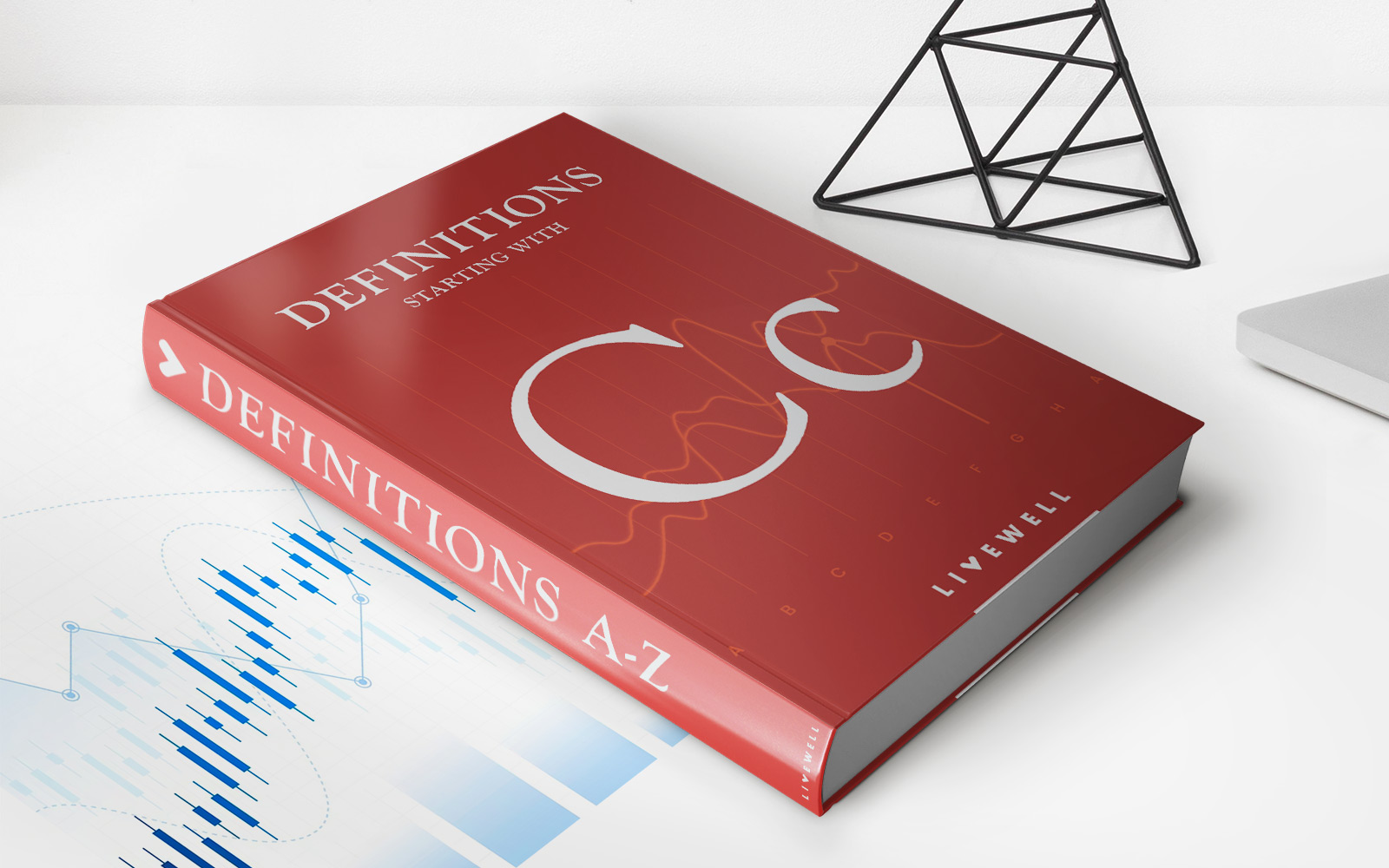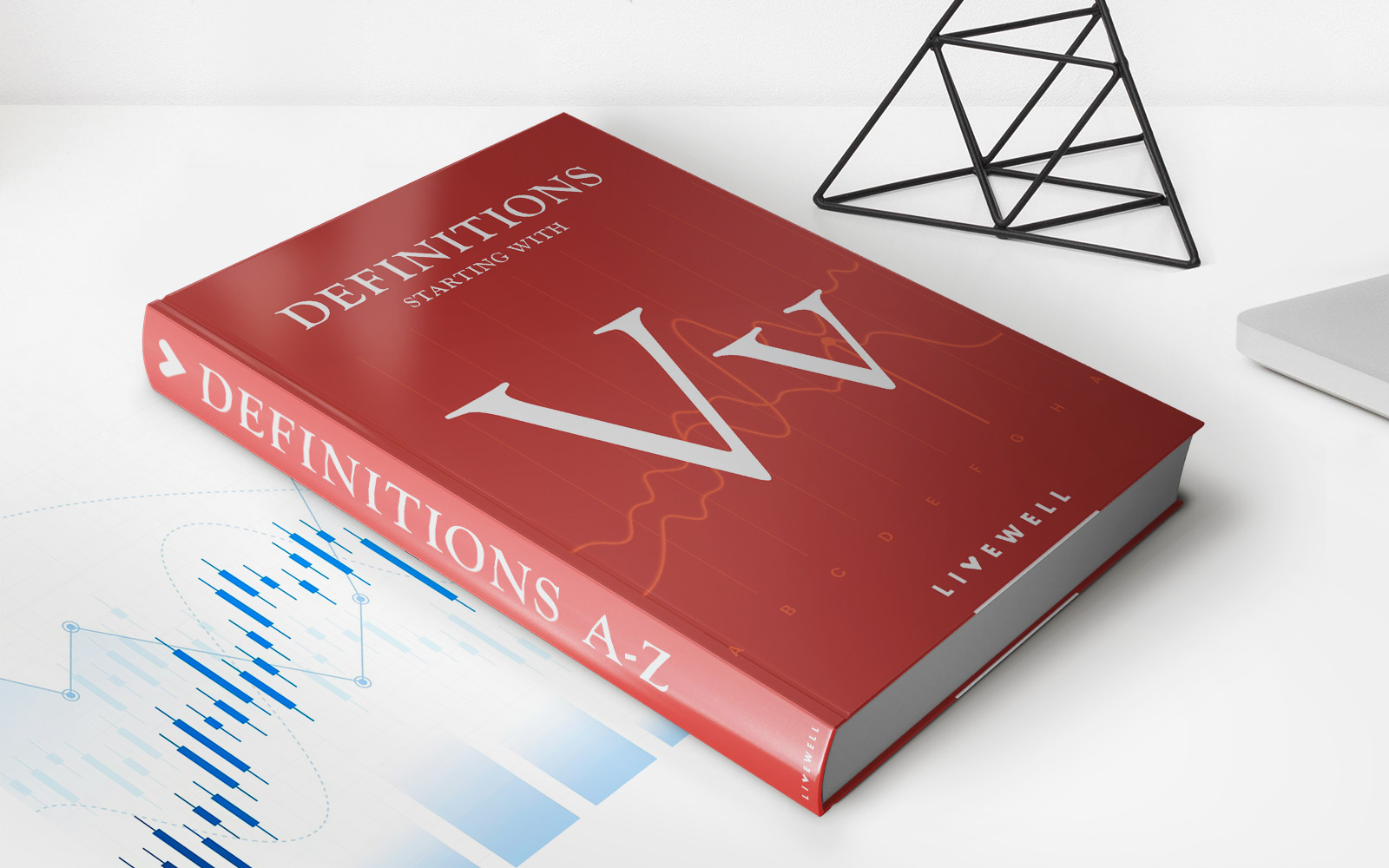Home>Finance>What Type Of Credit Card Fraud Is The Most Common
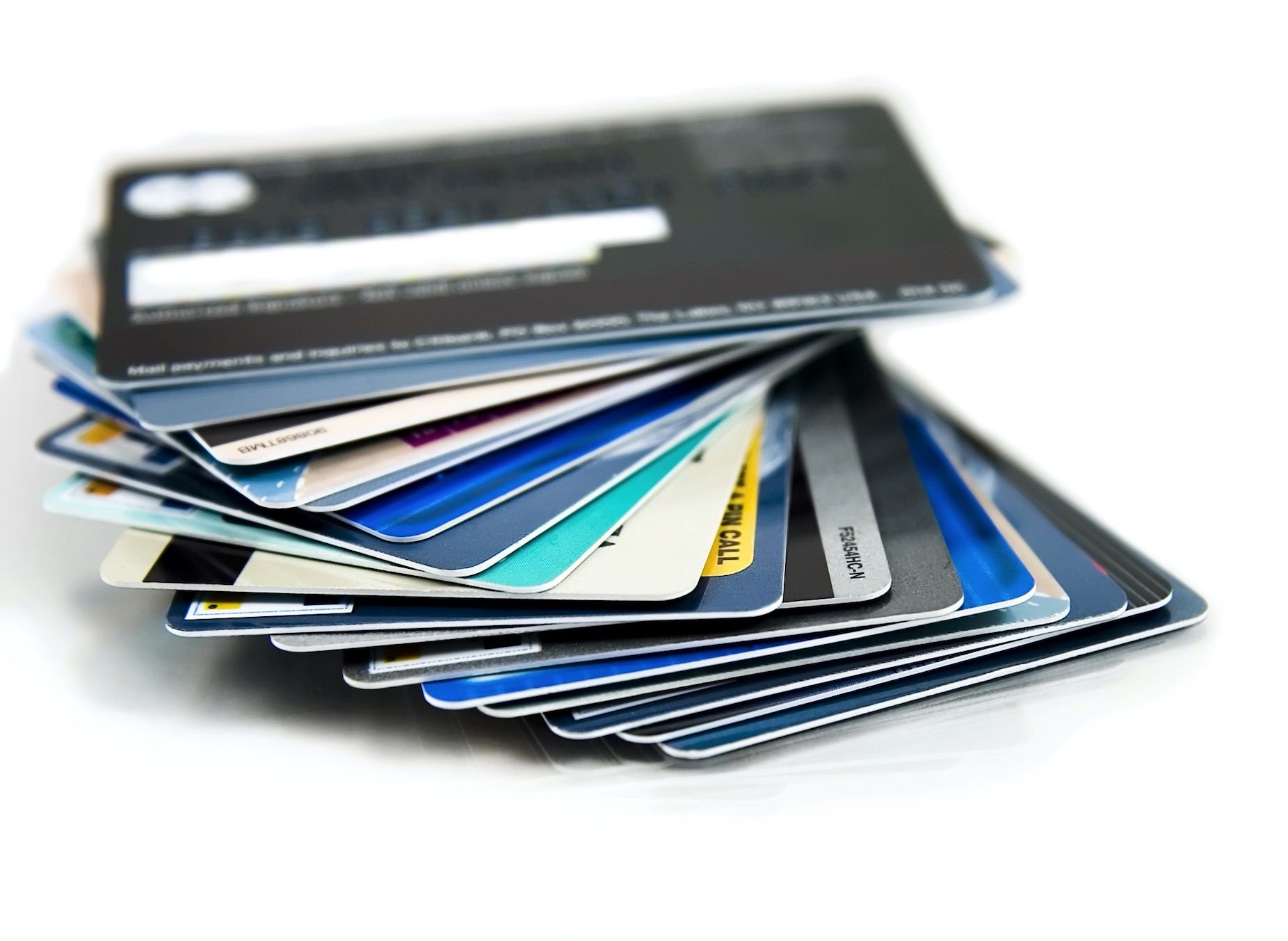

Finance
What Type Of Credit Card Fraud Is The Most Common
Published: October 26, 2023
Discover the most common type of credit card fraud in the finance industry and learn how to protect yourself from financial scams.
(Many of the links in this article redirect to a specific reviewed product. Your purchase of these products through affiliate links helps to generate commission for LiveWell, at no extra cost. Learn more)
Table of Contents
- Introduction
- Definition of Credit Card Fraud
- Overview of Different Types of Credit Card Frauds
- The Most Common Type of Credit Card Fraud: Identity Theft
- Techniques Used in Identity Theft Credit Card Fraud
- Ways to Protect Yourself from Identity Theft Credit Card Fraud
- Other Common Types of Credit Card Frauds
- Conclusion
Introduction
Credit card fraud is a prevalent issue that affects millions of people worldwide. In today’s digital age, where online transactions have become the norm, it is essential to be aware of the various types of credit card fraud and how to protect yourself from becoming a victim.
Credit card fraud occurs when someone uses your credit card or credit card information without your permission, with the intention of making unauthorized purchases or accessing your sensitive financial information. This can result in significant financial losses, damage to your credit score, and the potential for identity theft.
In this comprehensive article, we will delve into the different types of credit card fraud, with a particular focus on the most common type: identity theft. We will explore the techniques used in identity theft credit card fraud and provide practical tips to safeguard yourself from falling prey to this illegal activity.
Additionally, we will touch on other common types of credit card fraud, shedding light on lesser-known tactics that fraudsters employ to exploit unsuspecting individuals. By understanding the various forms of credit card fraud and how they are perpetrated, you will be better equipped to prevent and detect fraudulent activity.
Let’s dive in and explore the world of credit card fraud, starting with an overview of the different types that exist.
Definition of Credit Card Fraud
Credit card fraud refers to the unauthorized use of someone else’s credit card or credit card information for fraudulent purposes. It involves the intentional deception and manipulation of financial information to obtain goods, services, or money without the cardholder’s consent.
There are several ways in which credit card fraud can occur, ranging from physical theft of a credit card to sophisticated cyber-attacks targeting online transactions. Fraudsters are constantly evolving their methods to exploit vulnerabilities in the payment system and take advantage of unsuspecting individuals.
Credit card fraud can result in significant financial losses for the victims, as well as damage to their credit score and reputation. It can also lead to a lengthy and cumbersome process of disputing unauthorized charges, canceling and reissuing credit cards, and trying to restore one’s financial security.
It is important to note that credit card fraud is a criminal offense and is punishable by law. The penalties for credit card fraud vary depending on the jurisdiction and the amount of fraud involved. Law enforcement agencies and financial institutions are actively working to combat credit card fraud through advanced security measures, fraud detection algorithms, and educating the public about the risks and prevention strategies.
Now that we have a clear understanding of what credit card fraud entails, let’s explore the different types of credit card fraud that individuals need to be aware of.
Overview of Different Types of Credit Card Frauds
There are various types of credit card fraud that can occur, each with its own unique set of techniques and risks. Understanding these different types will help individuals better identify and protect themselves against potential fraud attempts. Here is an overview of the most common types of credit card fraud:
- Identity Theft: Identity theft involves the unauthorized acquisition and use of someone’s personal information, such as name, address, Social Security number, and credit card details. Fraudsters use this stolen information to open new credit card accounts, make purchases, or commit other fraudulent activities.
- Card Skimming: Card skimming occurs when fraudsters capture credit card information by using a skimming device, typically installed on ATMs, gas pumps, or other payment terminals. These devices are designed to read and store the card’s magnetic stripe data, which can then be used to create counterfeit cards or make unauthorized online purchases.
- Phishing: Phishing is a cyber-attack technique where fraudsters send deceptive emails or create fake websites to trick individuals into disclosing their credit card information. These emails or websites often mimic legitimate businesses and institutions, making it challenging to differentiate between genuine and fraudulent communications.
- Card Not Present (CNP) Fraud: CNP fraud occurs when an unauthorized individual uses stolen credit card details to make purchases remotely, without physically presenting the card. This type of fraud is prevalent in online shopping, telephone orders, or mail-order transactions.
- Lost or Stolen Cards: This type of fraud involves the unauthorized use of a lost or stolen credit card. Once the card is in the hands of the fraudster, they can make purchases or withdrawals until the card is reported as lost or stolen.
- Account Takeover: Account takeover occurs when fraudsters gain unauthorized access to a person’s credit card account. They may change the account information, such as the billing address or contact details, to divert communication and take control of the account for fraudulent purposes.
It’s important to stay informed about these different types of credit card fraud to ensure that you can take appropriate measures to protect yourself. In the next section, we will focus on the most common type of credit card fraud: identity theft, and explore the techniques used by fraudsters in this type of fraud.
The Most Common Type of Credit Card Fraud: Identity Theft
Identity theft is one of the most prevalent and concerning types of credit card fraud. It involves the unauthorized use of someone’s personal information to fraudulently obtain credit, make purchases, or engage in other fraudulent activities. Identity theft can have far-reaching consequences, not only financially but also emotionally and psychologically.
Fraudsters engage in various techniques to carry out identity theft credit card fraud. Here are some of the most common techniques:
- Phishing: Fraudsters send deceptive emails or create fake websites to trick individuals into divulging their personal and credit card information. They often pose as legitimate businesses or financial institutions, luring victims into providing sensitive details.
- Malware and Data Breaches: Fraudsters exploit vulnerabilities in computer systems and networks, infecting them with malware or hacking databases to gain access to personal and credit card information. These stolen details are then used to perpetrate identity theft and credit card fraud.
- Mail Theft: Fraudsters target physical mailboxes to steal documents containing personal information, including credit card statements, pre-approved credit card offers, or other financial documents. With this information, they can assume someone’s identity and open fraudulent accounts.
- Dumpster Diving: Some fraudsters resort to digging through trash to find discarded documents, such as bank statements or credit card receipts, that contain valuable personal information. By obtaining these details, they can assume someone’s identity and commit credit card fraud.
- Physical Theft: Identity thieves may physically steal wallets, purses, or other personal belongings to gain access to credit cards and their associated information. With these stolen cards, they can make unauthorized purchases before the theft is discovered.
- Social Engineering: Fraudsters use psychological manipulation techniques to trick individuals into revealing their personal and credit card information. This can occur through phone calls, where the fraudster impersonates a legitimate organization and extracts sensitive details from unsuspecting victims.
To protect yourself from identity theft credit card fraud, it is crucial to be vigilant and take proactive measures:
- Guard your personal information: Be cautious about sharing personal information, such as your Social Security number or credit card details, over the phone or through email. Legitimate organizations will not ask for this information through unsolicited communications.
- Beware of phishing attempts: Be wary of emails or websites that request personal or credit card information. Verify the legitimacy of the communication by contacting the organization directly or visiting their official website independently.
- Secure your physical documents: Safeguard your credit card statements, receipts, and other financial documents. Shred any documents containing sensitive information before disposing of them.
- Use strong passwords: Create unique and complex passwords for your online accounts, including your credit card accounts. Regularly update your passwords and enable multi-factor authentication whenever possible.
- Monitor your accounts: Regularly review your credit card statements and online account activity to detect any unauthorized transactions or suspicious activity. Report any discrepancies or potential fraud immediately to your credit card issuer.
- Stay informed: Keep up with the latest news and updates on identity theft and credit card fraud. Education and awareness are key in preventing and combating fraudulent activities.
By being vigilant and adopting these preventive measures, you can significantly reduce the risk of falling victim to identity theft credit card fraud. However, it is still essential to be aware of other common types of credit card fraud, which we will explore in the next section.
Techniques Used in Identity Theft Credit Card Fraud
Fraudsters employ various techniques in the realm of identity theft credit card fraud. These techniques are constantly evolving as criminals become more sophisticated in their approaches. Understanding these tactics can help individuals recognize potential red flags and take necessary precautions to protect their personal and financial information. Here are some common techniques used in identity theft credit card fraud:
- Phishing: Phishing attacks involve the use of deceptive emails, messages, or phone calls to trick individuals into revealing their personal and credit card information. These communications often claim to be from reputable organizations, such as financial institutions, and prompt recipients to provide sensitive details.
- Malware and Data Breaches: Fraudsters exploit vulnerabilities in computer systems and networks, installing malware or hacking databases to gain access to personal and credit card information. They can then use this stolen data for identity theft and credit card fraud.
- Skimming Devices: Skimming devices are physical devices placed on legitimate card readers, such as ATMs or payment terminals, to capture credit card information. These devices can record the data from the card’s magnetic stripe, allowing fraudsters to create counterfeit cards or make unauthorized online transactions.
- False Applications: Identity thieves may use stolen personal information to apply for new credit cards in the victim’s name. By acquiring these credit cards, they can make purchases or obtain cash advances, leaving the victim responsible for the fraudulent charges.
- Pretexting: Pretexting involves creating a fabricated scenario to gain access to personal and credit card information. Fraudsters may pose as a legitimate service provider or authority figure, luring individuals into sharing sensitive details under false pretenses.
- Account Takeover: In this technique, fraudsters gain unauthorized access to an individual’s credit card account by stealing login credentials or manipulating security measures. Once in control of the account, they can make unauthorized transactions or change the account settings to divert communication.
It’s important to remember that these techniques are constantly evolving, and fraudsters are continually finding new ways to exploit vulnerabilities. However, there are steps you can take to protect yourself from identity theft credit card fraud:
- Be cautious of unsolicited communications: Do not provide personal or credit card information through unsolicited emails, messages, or calls. Legitimate organizations will not request sensitive information without proper verification.
- Keep software and devices up to date: Regularly update your computer, smartphone, and other devices with the latest security patches and antivirus software. This helps protect against malware and other malicious activities.
- Monitor your accounts: Regularly review your credit card statements and online account activity to detect any unauthorized transactions or suspicious activity. Promptly report any discrepancies or potential fraud to your credit card issuer.
- Use strong passwords and multi-factor authentication: Create unique and complex passwords for your online accounts, including your credit card accounts. Enable multi-factor authentication whenever possible to add an extra layer of security.
- Be cautious of public Wi-Fi networks: Avoid accessing sensitive information or making online transactions when connected to public Wi-Fi networks, as they may not be secure. It’s best to use a secure and trusted network for such activities.
- Protect your physical cards: Keep your credit cards in a safe place and promptly report any lost or stolen cards to your credit card issuer. Use secure ATMs and payment terminals and be alert for any signs of tampering.
By staying vigilant and implementing these preventive measures, you can reduce the risk of falling victim to identity theft credit card fraud. In the next section, we will explore other common types of credit card fraud that individuals should be aware of.
Ways to Protect Yourself from Identity Theft Credit Card Fraud
Protecting yourself from identity theft credit card fraud is crucial in today’s digital landscape. By being proactive and implementing preventive measures, you can significantly reduce the risk of falling victim to these fraudulent activities. Here are some effective ways to safeguard yourself:
- Monitor your credit card statements: Regularly review your credit card statements to ensure that all charges are legitimate. Keep an eye out for any unfamiliar or unauthorized transactions, and report them to your credit card issuer immediately.
- Check your credit reports: Request a free copy of your credit report annually from each of the major credit bureaus: Equifax, Experian, and TransUnion. Review the reports for any suspicious activity or accounts that you don’t recognize.
- Use secure online shopping practices: Only make online purchases from reputable and secure websites. Look for the padlock icon in the address bar and ensure that the website’s URL starts with “https” to indicate a secure connection.
- Be cautious with your personal information: Be selective about who you share your personal information with. Avoid providing sensitive details unless you are confident in the organization’s legitimacy and need for the information.
- Enable fraud alerts and notifications: Sign up for alerts and notifications from your credit card issuer or financial institution. These alerts can notify you of any suspicious activity or changes to your account, allowing you to take immediate action.
- Secure your physical cards: Keep your credit cards in a safe place and never leave them unattended. Memorize your PINs instead of writing them down, and do not share your PIN or card details with anyone.
- Use strong and unique passwords: Create strong, complex passwords for your online accounts, including your credit card accounts. Avoid using easily guessable passwords and consider using a password manager to keep track of your login credentials securely.
- Stay informed about scams and new fraud techniques: Keep up with the latest information on scams and fraudulent activities. Stay informed about new tactics that fraudsters may use, and be wary of suspicious emails, calls, or messages that request personal or credit card information.
- Be cautious with public Wi-Fi networks: Avoid accessing sensitive information or making online transactions when connected to public Wi-Fi networks, as they may not be secure. If you need to use public Wi-Fi, consider using a VPN (Virtual Private Network) for added security.
Remember, no measure is foolproof, and criminals are constantly evolving their tactics. However, by implementing these protective measures, you can significantly reduce your vulnerability to identity theft credit card fraud.
If you suspect that you have fallen victim to identity theft credit card fraud or have experienced unauthorized activity on your credit card, it is essential to act quickly. Contact your credit card issuer immediately to report the fraudulent activity, cancel the card, and initiate an investigation. Time is of the essence in mitigating the potential damage caused by identity theft.
By staying vigilant and taking proactive steps to protect your personal and financial information, you can help ensure a more secure online presence and peace of mind.
Other Common Types of Credit Card Frauds
While identity theft remains the most common type of credit card fraud, it is essential to be aware of other common techniques used by fraudsters. By understanding these methods, you can better protect yourself and minimize the risk of falling victim to credit card fraud. Here are some other common types of credit card fraud:
- Credit Card Skimming: Skimming refers to the unauthorized collection of credit card information through card readers or devices that have been tampered with. Fraudsters place card skimmers on ATMs, gas pumps, or other payment terminals, allowing them to capture credit card data when individuals use these compromised devices.
- Application Fraud: Application fraud occurs when someone applies for a new credit card using stolen or falsified information. This type of fraud typically involves creating a fictitious identity or using stolen identities to open fraudulent accounts.
- Triangulation Fraud: Triangulation fraud involves a fraudster posing as an online seller, advertising products at a discounted price. The fraudster then offers to handle the transaction by redirecting the buyer to a fraudulent payment platform, where they gather the buyer’s credit card information for unauthorized use.
- Account Takeover: Account takeover occurs when a fraudster gains unauthorized access to someone’s credit card account, often through phishing scams or malware attacks. Once in control, the fraudster can make unauthorized purchases, change account details, and even steal rewards or points associated with the account.
- Friendly Fraud: Friendly fraud occurs when a legitimate cardholder disputes a valid charge, either intentionally or mistakenly, with the intention to obtain a refund or avoid payment. This type of fraud can lead to financial losses for merchants and may result in higher prices for consumers.
- New Account Fraud: New account fraud involves fraudsters opening new credit card accounts using stolen identities or falsified information. This type of fraud can go undetected for some time, allowing the fraudster to make unauthorized purchases or obtain credit in the victim’s name.
To protect yourself from these common types of credit card fraud, it is essential to remain vigilant and take proactive measures:
- Regularly review your credit card statements and report any suspicious transactions to your credit card issuer.
- Be cautious when providing your credit card information online, ensuring the website is secure and trustworthy.
- Keep your physical cards secure and report any lost or stolen cards immediately.
- Use strong and unique passwords for your online accounts, including your credit card accounts.
- Stay informed about the latest fraud techniques and be wary of phishing attempts and suspicious communications.
- Consider using credit monitoring services to stay updated on any potential fraudulent activity involving your credit cards.
By staying informed and implementing these preventive measures, you can significantly reduce the risk of falling victim to credit card fraud. Additionally, promptly reporting any suspicious activity or potential fraud to your credit card issuer is crucial in mitigating the potential damage caused by fraudulent transactions.
Remember, prevention is key, and staying proactive is your best defense against credit card fraud.
Conclusion
Credit card fraud is an ever-present threat in today’s digital world. Understanding the different types of credit card fraud and the techniques employed by fraudsters is crucial for protecting yourself from potential financial losses and the stress of dealing with the aftermath of fraudulent activity.
In this article, we explored the most common type of credit card fraud: identity theft. We examined the techniques used in identity theft credit card fraud, such as phishing, malware, skimming, and more. By being aware of these tactics, you can be proactive in safeguarding your personal and financial information.
We also discussed effective ways to protect yourself from identity theft credit card fraud, including monitoring your accounts, using secure online practices, and staying informed about the latest fraud techniques. By implementing these preventive measures, you can reduce the risk of becoming a victim of credit card fraud.
Furthermore, we highlighted other common types of credit card fraud, including credit card skimming, application fraud, triangulation fraud, account takeover, friendly fraud, and new account fraud. Being informed about these types of fraud helps you recognize potential red flags and take appropriate precautions.
Remember, no security measure is foolproof, and fraudsters are constantly devising new tactics. It’s essential to stay vigilant and cautious when it comes to sharing personal and credit card information. Regularly monitoring your credit card statements, checking your credit reports, and promptly reporting any suspicious activity to your credit card issuer are crucial steps in protecting yourself.
By staying informed, proactive, and implementing preventive measures, you can reduce the risk of credit card fraud and enjoy a more secure financial experience. Protecting your credit card and personal information is not only beneficial for your financial well-being but also for your peace of mind.
Stay vigilant, stay informed, and take proactive steps to safeguard your financial information from credit card fraud.
